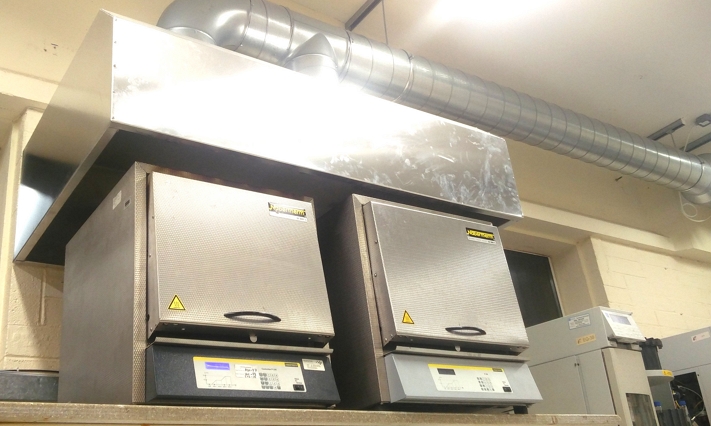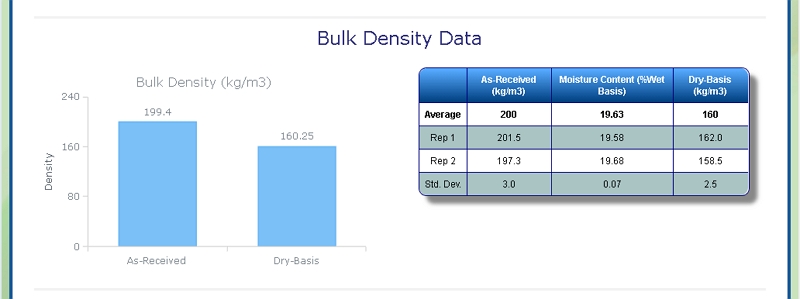Analysis of Coppices
Background on Coppices
Coppice plantations are currently established from 20-25 cm long un-rooted stem cuttings vertically planted in a seed-bed. Immediately after planting, a pre-emergent herbicide is usually applied to prevent germination of annual weeds. By the end of the first growing season, usually in November, the trees will have reached a height of approximately one to two and a half metres and usually have one to four stems.
Coppicing the stems at a height of 2-5 cm promotes multiple sprout formation, which results in rapid canopy closure in the second growing season.
After the second growing season little maintenance is required, apart from disease/insect monitoring. The number of years between harvests is defined as the cutting cycle. SRCs generally have cutting cycles of between two and five years. Conventionally, it has been recommended that harvesting should occur in the winter, when the plants are dormant and their leaves have fallen, and be completed by bud swell. This period would usually be approximately four months - between late November and mid March. Due to the heavy nature of the harvesting machinery, operations are not considered possible when the soil is wet. Some studies indicate that year-long harvesting is possible, although there are yield losses associated with summer harvesting. These losses need to be weighed against dry matter losses experienced in storage.
The harvesters used tend to either cut and chip the coppice in one operation, or harvest the whole stems for later comminution.
Analysis of Coppices at Celignis
Celignis Analytical can determine the following properties of Coppices samples:
Lignocellulosic Properties of Coppices
Cellulose Content of Coppices
Click here to see the Celignis Analysis Packages that determine Cellulose Content
Request a QuoteCellulose Content
Hemicellulose Content of Coppices
Click here to see the Celignis Analysis Packages that determine Hemicellulose Content
Request a QuoteHemicellulose Content
Lignin Content of Coppices
Click here to see the Celignis Analysis Packages that determine Lignin Content
Request a QuoteLignin Content
Starch Content of Coppices
Click here to see the Celignis Analysis Packages that determine Starch Content
Request a QuoteStarch Content
Uronic Acid Content of Coppices
Click here to see the Celignis Analysis Packages that determine Uronic Acid Content
Request a QuoteUronic Acid Content
Enzymatic Hydrolysis of Coppices
Click here to see the Celignis Analysis Packages that determine Enzymatic Hydrolysis
Request a QuoteEnzymatic Hydrolysis
Bioenergy Properties of Coppices
Ash Content of Coppices
Click here to see the Celignis Analysis Packages that determine Ash Content
Request a QuoteAsh Content
Heating (Calorific) Value of Coppices
Click here to see the Celignis Analysis Packages that determine Heating (Calorific) Value
Request a QuoteHeating (Calorific) Value
Ash Melting Behaviour of Coppices
Ash Shrinkage Starting Temperature (SST) - This occurs when the area of the test piece of Coppices ash falls below 95% of the original test piece area.
Ash Deformation Temperature (DT) - The temperature at which the first signs of rounding of the edges of the test piece occurs due to melting.
Ash Hemisphere Temperature (HT) - When the test piece of Coppices ash forms a hemisphere (i.e. the height becomes equal to half the base diameter).
Ash Flow Temperature (FT) - The temperature at which the Coppices ash is spread out over the supporting tile in a layer, the height of which is half of the test piece at the hemisphere temperature.
Click here to see the Celignis Analysis Packages that determine Ash Melting Behaviour
Request a QuoteAsh Melting Behaviour
Major and Minor Elements in Coppices
We can also determine the levels of 13 different minor elements (such as arsenic, copper, and zinc) that may be present in Coppices.
Click here to see the Celignis Analysis Packages that determine Major and Minor Elements
Request a QuoteMajor and Minor Elements
Analysis of Coppices for Anaerobic Digestion
Biomethane potential (BMP) of Coppices
At Celignis we can provide you with crucial data on feedstock suitability for AD as well as on the composition of process residues. For example, we can determine the biomethane potential (BMP) of Coppices. The BMP can be considered to be the experimental theoretical maximum amount of methane produced from a feedstock. We moniotor the volume of biogas produced allowing for a cumulative plot over time, accessed via the Celignis Database. Our BMP packages also involve routine analysis of biogas composition (biomethane, carbon dioxide, hydrogen sulphide, ammonia, oxygen). We also provide detailed analysis of the digestate, the residue that remains after a sample has been digested. Our expertise in lignocellulosic analysis can allow for detailed insight regarding the fate of the different biogenic polymers during digestion.
Click here to see the Celignis Analysis Packages that determine BMP
Request a QuoteBMP
Physical Properties of Coppices
Bulk Density of Coppices
At Celignis we can determine the bulk density of biomass samples, including Coppices, according to ISO standard 17828 (2015). This method requires the biomass to be in an appropriate form (chips or powder) for density determination.
Click here to see the Celignis Analysis Packages that determine Bulk Density
Request a QuoteBulk Density
Particle Size of Coppices
Our lab is equipped with a Retsch AS 400 sieve shaker. It can accommodate sieves of up to 40 cm diameter, corresponding to a surface area of 1256 square centimetres. This allows us to determine the particle size distribution of a range of samples, including Coppices, by following European Standard methods EN 15149- 1:2010 and EN 15149-2:2010.
Click here to see the Celignis Analysis Packages that determine Particle Size
Request a QuoteParticle Size



















